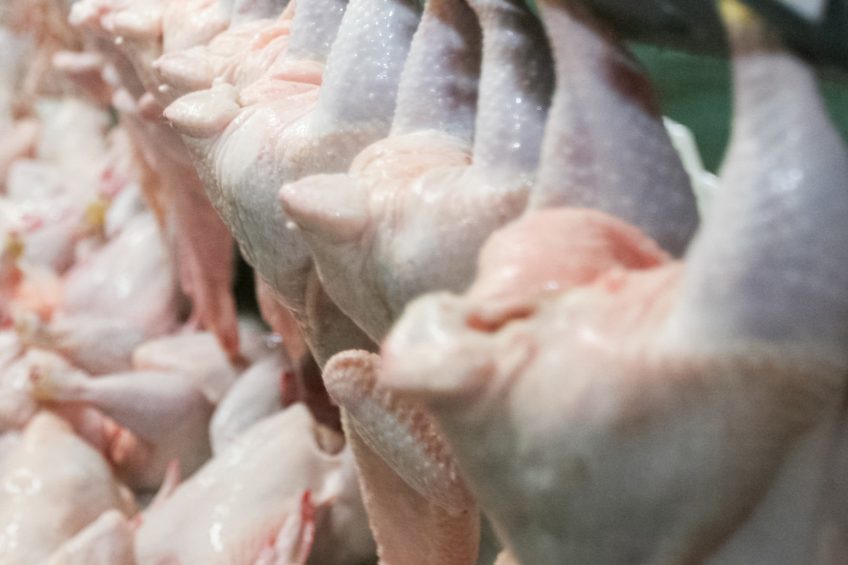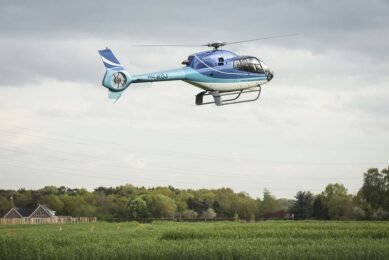Towards a safe and sustainable poultry chain

Moves towards creating an innovative poultry production chain have taken a step forward following the release of a report into a major three-year European study.
The project wanted to develop an innovative production chain that offers high quality and safe products, as required by the consumer, through a guaranteed traceability and product safety and valorisation and development of distinctive poultry products.
It was carried out against a backdrop of increasing volumes of poultry meat being imported from Brazil and Thailand.
The project was divided into four research topics – product transparency and recognisability, animal welfare, healthy and robust chickens and valorisation and development of added value products. Within the topics, 32 studies were defined, of which 30 were carried out by HAS University of Applied Sciences and Wageningen Research.
Product transparency and recognisability
This focused not just on transparency and recognisability but also the development of a sustainability model through mapping of the broiler production chain. From this production chain, three chain links were selected for further study – the broiler farmer, slaughterhouse and processing plant.
The sustainability study found that broiler farmers as well as the processing industry could make improvements with relatively low effort, such as using more green energy and cutting back on water usage where possible.
Animal welfare
Experiments performed for the development of effective environmental enrichment showed that broiler chickens prefer some enrichments over others – eg for resting on elevated structures they preferred platforms over perches and for exploration and foraging they preferred wood shavings bales over lucerne bales and pecking stones.
They also made better use of enrichments when the stocking density was reduced from 35kg/square metre to 25kg/square metre.
And wood shavings bales only stimulated activity of broilers better as compared to the combination of wood shavings bales and platforms.
None of the experiments indicated that environmental enrichment negatively influenced the technical performance of the broilers but more research is needed to determine the optimum number in a broiler house.
End of life
The report says that data evaluation on the end-of-life phase shows that the percentage of wing fractures increases between lairage, post-shackling, post-stunning and post-plucking, with an average increase of 4% between lairage and post-plucking.
Additionally, most injuries and damage occur during the slaughter process and only a small percentage occurs during the pre-slaughter process (catching and transport). To develop preventative measures for injuries and damage, it is recommended to determine exactly where injuries and damage occur.
In addition, the report adds, a scoring system to determine the age of bruises needs to be developed.
During transport of broilers for thinning in average temperatures, it was shown that there were still large differences in the temperature (>10°C) in the containers according to the location of them in the truck. When vehicles stopped temperatures rose considerably, implying that especially during stops there is a welfare risk for broilers.
Thinning
The study on indicators of the effect of thinning found that the majority of broiler farms apply thinning as a matter of routine practice, of which 30% thins multiple times during a production cycle. Feed deprivation of the whole flock prior to thinning may negatively affect welfare of the remaining birds. The report argues that flock uniformity and the number of broilers per feeder after thinning could be suitable indicators to determine the effect of thinning.
Campylobacter
Studies on measures to reduce Campylobacter contamination on farm and during the slaughter process found that there are multiple introduction routes. Feed additives did not significantly reduce Campylobacter and it is possible that thinning might be an introduction route as contamination was detected on containers. A further study on the risk of contamination in containers confirmed that even after cleaning, containers were contaminated.
Three different intervention methods were tested in a slaughterhouse to reduce Campylobacter spp and Escherichia coli contamination during the slaughter process. The results showed that the tested intervention methods were all separately successful in reducing bacterial counts compared to no intervention.
Experiments with a fourth method, cold atmospheric plasma also led to a Campylobacter jejuni reduction but the meat quality was no longer acceptable after the treatment due to dehydration. Industrial applicability and suitable settings of this pilot technique to maintain meat quality would have to be developed before usage is possible.
Value added
This group of studies focused on reducing salt and E-numbers, development of gluten free products and on the valorisation of chicken leg meat. The salt content of spicy chicken wings could be reduced by 25% (20% in the marinade and 5% in the breading) without noticeable difference in either saltiness, tenderness, juiciness and colour.
The experiments on allergen-free Hotwings revealed that a combination of chickpea, rice and tapioca flour resulted in the best gluten-free breading mixture with similar or better properties compared to the reference product which had a wheat flour breading. Another project led to the development of four concepts for world marinades to be used on chicken thighs. All are free from allergens, low in salt and low in E-numbers.
Several product concepts were developed for the valorisation of leg meat. One of the concepts is a non-sticky fingers concept, which consists of drumsticks with a clean bone resulting in clean hands after consumption.
The report summary concluded that “with these work packages we covered a large part of the poultry production chain – starting on the farm to improve animal welfare, health and sustainability, to the processing industry where sustainability, product safety and health were addressed, to the production of products with lower salt and E-number contents, novel concepts for valorisation of the broilers up to the customer wishes.
“The results of the performed projects contribute to an innovative poultry production chain, through the developed welfare and sustainability model for more transparency and recognisability, through the novel, high quality product concepts developed, the insights in end of life welfare, the demonstrated potential for Campylobacter reduction in the slaughter process and the improved understanding of effective environmental enrichment that can be applied on farm.”
• The collaborators for this report were Wageningen Livestock Research, Wageningen Food and Biobased Research, HAS University of Applied Science, Marks and Spencer, Food Animal Initiative and Heijs Food Products.
Join 31,000+ subscribers
Subscribe to our newsletter to stay updated about all the need-to-know content in the poultry sector, three times a week. Beheer
Beheer








 WP Admin
WP Admin  Bewerk bericht
Bewerk bericht